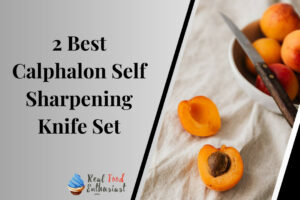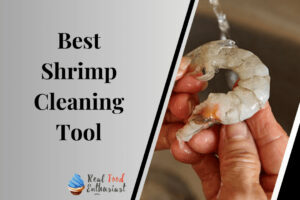Usuba vs Nakiri is a vital kitchen communication to get your basics straight. These are the two types of rectangular veggie knives that possess a list of differences but might seem similar to an unskilled eye, primarily in the western world. They had their roots in the Japanese culture.
Contents
Usuba vs Nakiri Knife
The similarities which lie between these knives are they both possess the straight blade edge and are used basically for slicing the vegetables. Besides this, there are a lot of differences between the two.
Simply put, Usuba lies on a more skilled tangent, however, Nakiri is easier to use as the vegetable chopper. The further terrific details are listed below.
Nakiri
This kind of knife has a straight blade edge and a no-tip smooth front. The main purpose of this kitchen equipment is that it forms to be an excellent vegetable chopper that is used in a vertical technique only. One is not burdened with the worries of pulling and pushing in order to slice the veggies, all you need to do is chop-chop!
Another interesting feature of this Japanese knife is that like any other Japanese original knife it is narrow, pointed, and extra-thick blade which makes it convenient for the chef to easily chisel down the veggies with nearly no effort. This feature helps in achieving a smooth job for the cook.
Yet another aspect of these knives is they come in lengths of five to seven inches with a blade so sharp and thin that it allows a perfect motion empowering the knuckles of a culinarian with considerable space so that they won’t get smashed. With all these facets, Nakiri knives make up a good all-rounder knife but with the only drawback of not being able to cut down the heavy bone work.
Usuba
This knife, like Nakiri, also possesses a straight blade edge with no tip flat front. The literal meaning of the word ‘ Usuba’ translates to the thin blade, which is yet another important embodiment of this kind of dagger. In a more professional language, it is also referred to as a single bevel knife, however, for a layman, it is that good Sushi knife that is sharpened on only one side of the blade.
Because of this above-mentioned feature, this knife comes in handy for the left-handers as well. They require subtle training before using to deliver the basic purpose perfectly. They possess a blade over one side and therefore come in as a different set for left-handers and right-handers. That is why they are preferred in professional services rather than regular home cooks.
Difference between usuba vs nakiri
Usuba vs Nakiri are two types of knives that look identical and indistinguishable to an unskilled and kitchen incompetent eye. They are also used for a similar work of chopping veggies but that is where the similarities list ends. The discrepancy that exists is at large and because of this, they are not used by the same kind of people as well. The following are the distinct characteristics of the different types of knives.
Peculiarities of Nakiri – Usuba VS nakiri
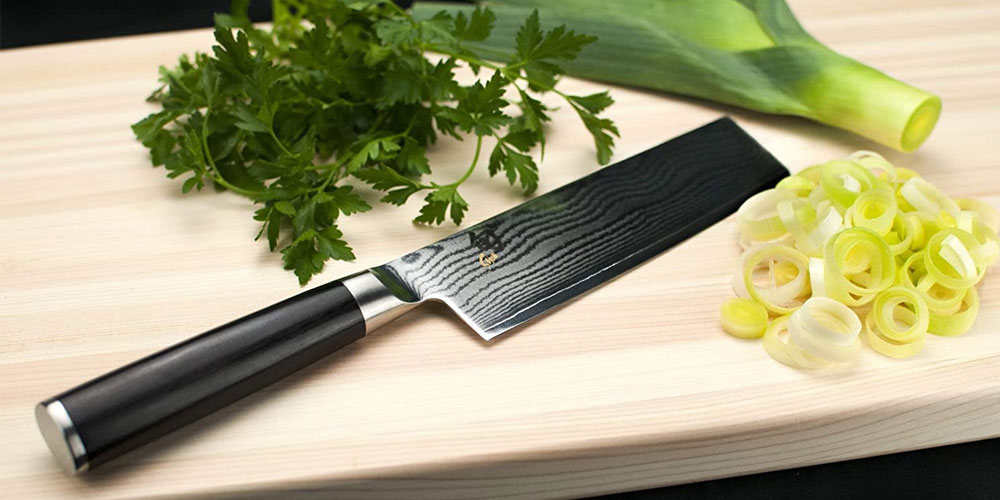
- They usually retain a thin or narrow blade.
- It is a perfect dessert for up and down mincing
- Their price range falls into an average category that is, it is neither too expensive nor too cheap.
- It is a well-structured round knife that is used easily.
- It has blades on both sides and is hence called a Double bevel blade.
- It is a knife that can be used by someone from a professional background as well as a basic ordinary home cook.
- The last facet is that it is easy to sharpen the edges of these knives.
Peculiarities of Usuba
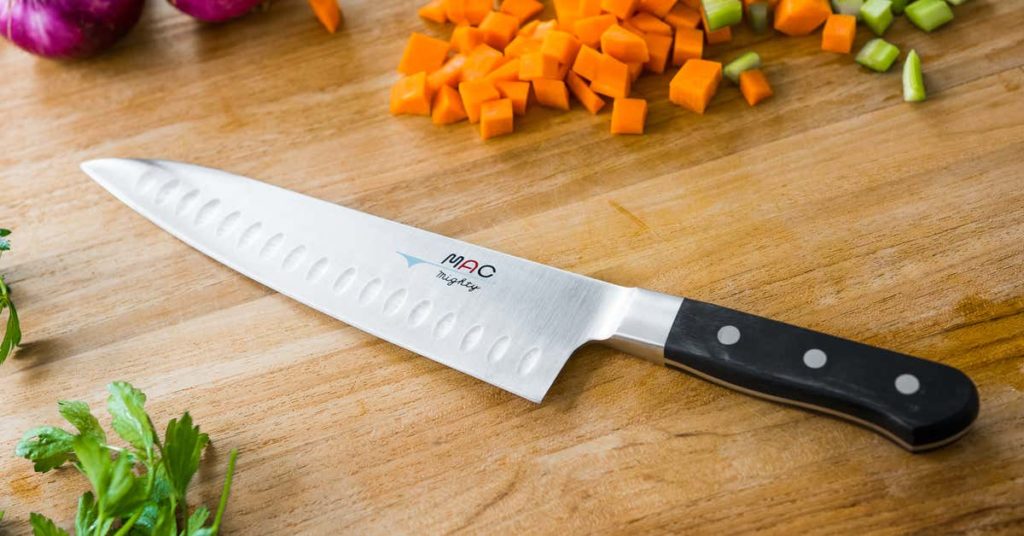
- They are the blades of heavy spines.
- Their price range falls into the expensive category.
- It is a knife that is meant to be used by the finest culinary arts experts.
- They have a very pointed and soft blade edge.
- They possess blades on one side only and hence came to be known as single bevel blades.
- It is exclusively designed for working a finesse job on vegetables.
- The last aspect is that it requires a minimum of knowledge to sharpen the blades of Usuba Knives.
What is an Usuba knife used for?
The Usuba blade is a conventional yet concentrated blade ideal for laboring with vegetables in an expert kitchen. Frequently utilized by sushi gourmet experts, the single-slant Usuba blade offers powerful slicing answers for people looking to copy Japanese cooking. This kitchen blade is helpful for such things as stripping daikon radishes or other strength undertakings. The Usuba is a unique instrument that is regularly found in a restaurant or hotel’s kitchen rather than in a home kitchen. Be that as it may, a home culinary arts expert while extending their collection, often view the Usuba knife as the test to succeed at a culinary level. As another instrument in the kitchen, the Usuba blade can become crucial while preparing conventional Japanese food.
The slender style of the Usuba blade fits fragile cutting and push cutting endeavors. The dainty edge takes action for exact cutting and super particular arrangements. The slender cutting edge is ideal for operating with vegetables just as severing, slicing, stripping, cutting, and cubing. The single slope sharp edge considers exact cutting and equal pieces.
What is the best nakiri knife?
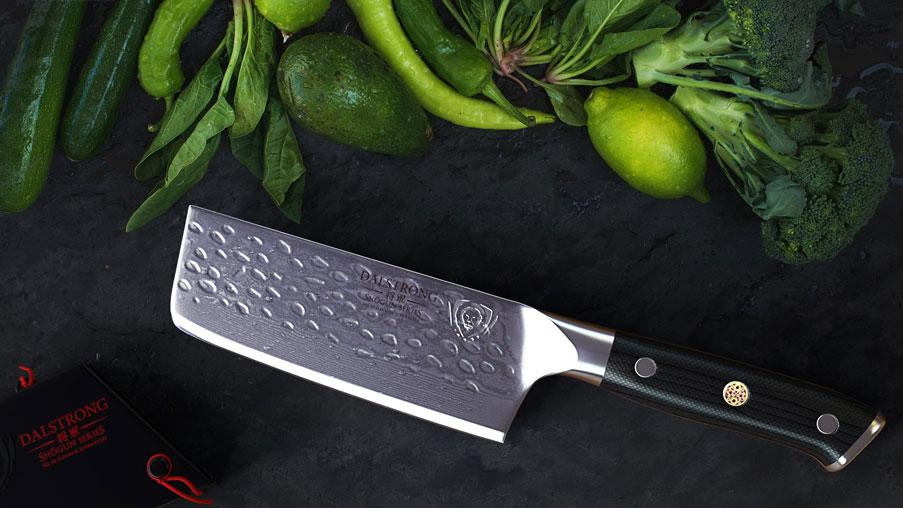
The best Nakiri knives as represented by Amazon’s choice are:
i) VG-10 16 Yoshihiro – Damascus Stainless Steel Layer Hammered Nakiri Vegetable Knife
ii) 8.5 inches TUO Kiritsuke Knife – Japanese knife for meat and vegetales – Japanese AUS-8 Steel with Seawave pattern – G10 Handle – Ergonomic
You can also find more details about Knife best-chef-knife-under-100
Frequently Asked Questions
Should I buy a nakiri knife?
Nakiri blades are the most ideally equipped device for the work for a few reasons, and the Japanese have known this for quite a while. In any case, the mystery’s out!
It’s ideal for cutting long veggies in a solitary cleave. In addition, it is extraordinary for a push or maneuver cut into squash and surprisingly some harder vegetables. Different blades are acceptable at the point when you a gander at the shape, you can perceive how effectively your fingers will conform around the grip with no compelling reason to fear of smashing your knuckles on the chopping board. The decent nakiri blades are additionally known for being generally excellent for dicing veggies.
How do you sharpen an Usuba knife?
For the honing point, place the blade on the gravel, keep down the forefront with the goal that the cutting edge is marginally turned up to the correct point, and hone. Spot your left hand in the spot you need to hone, move to and fro around multiple times and hone until the burr shows up
Just the angle side of the blade is honed on coarse and medium coarseness stones. Turn the edge over and hone the angled side. Maintain the cutting edge at a point of around 30 degrees to the extent of the rock.
How do you use an Usuba knife?
One needs a flat cutting board and a dead flat usuba to perfectly slice down the veggies. The slight curvature on the knife helps complete the cut so one doesn’t have that accordion effect. For long cuts in a vertical manner, one needs to have a flat board else it is impossible to slice using usuba. If you are cutting straight down, the knife tends to turn around because that’s the way the back of the knife is ground but if you cut on a push and pull it’s much easier to control. If the knife is at 45 degrees angle and as we slice to the vegetable it doesn’t affect much of the interaction between knife and veggies.
A straight down cut, the halfway effect which is when the vegetables haven’t hit the Shimoga line, doesn’t have much effect, but as soon as you pull back the knife you are using that line as a reference point and the knife is sliding down that cutting point and continuing in that direction.
If one is cutting a wide vegetable like lotus root then it’s easier to insert the knife in the middle and rock the vegetable until it is sliced straight down.
How do you sharpen nakiri?
This knife is very convenient to sharpen and there are several ways to do it. Firstly by using Whetstone or Diamond stone. You need to keep the angle constant while sharpening the knife. You require to keep the rough side of the stone to grind and then the fine side to sharpen. The second way is a honing rod and the third is a ceramic cup. In both ways put the knife at a 20-degree angle and drag the knife over them.



